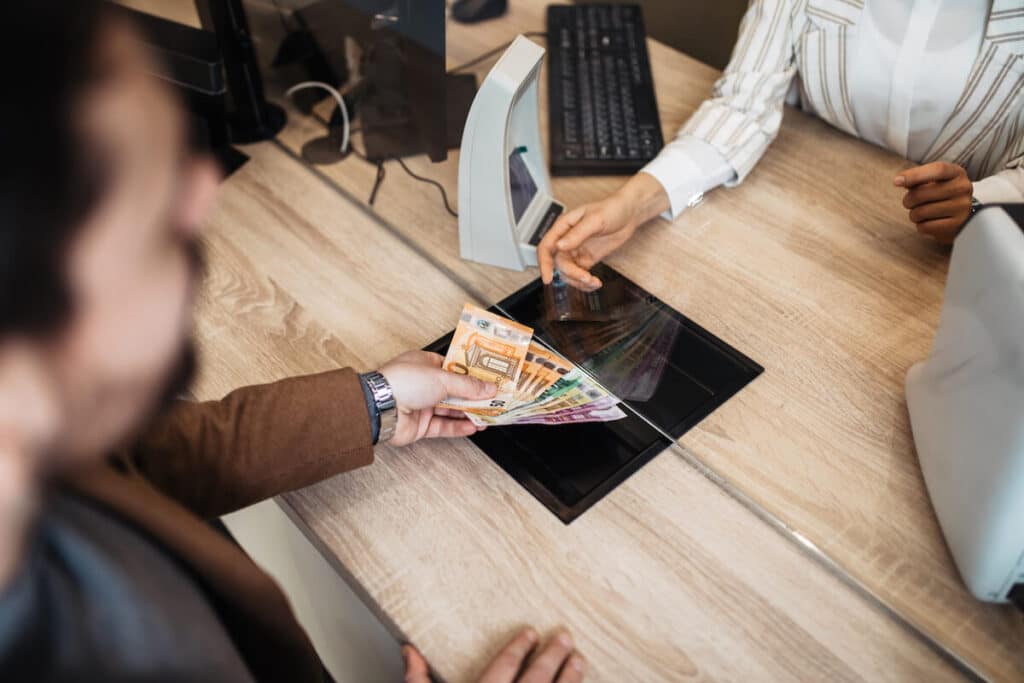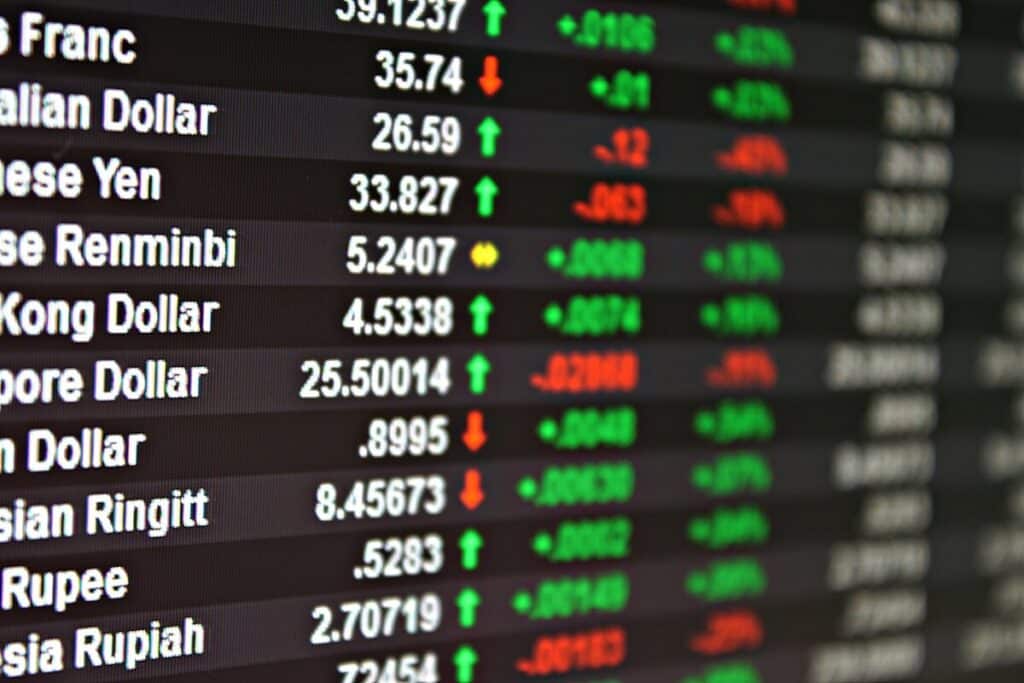If you’re planning to travel abroad or want to send money to family or friends in another country, chances are you’re going to need to exchange currency. But with banks, ATMs, and currency exchange services all offering different exchange rates, it can be hard to know where to exchange currency to get the best price and the most convenience.
The best option for you will depend on where you’re located, which currencies you want to exchange, and how soon you need the money.
Let’s take a look at when you should exchange currency, where to exchange currency, and some alternatives to traditional money exchange services.
Why should you exchange currency?
For those who use mobile apps and money wallets at home, exchanging currency can be an unfamiliar process. But mobile wallets don’t usually allow you to send money to foreign countries, and you’ll need access to the local currency in your destination.
Credit cards and debit cards make it easy to travel overseas without cash, but using your card overseas may incur extra fees or present other challenges. Here are three reasons to exchange money before your next trip.
1. Lock in the best exchange rate.
Currency exchange rates fluctuate all the time based on market conditions and other variables. International travelers can save money by converting currency in advance when the exchange rate is in their favor.
The main exception is for currencies that are pegged to a foreign currency’s value. For example, the West African CFA franc is pegged to the euro (EUR), which means you’ll always get the same number of CFA francs—655.957—for 1 EUR.
2. Some vendors may not take cards.

While more and more vendors accept Visa and Mastercard around the world, that isn’t the case everywhere. Some countries still have a cash-based economy, where ATMs are rare and most merchants prefer coins and banknotes.
There may also be occasions when you need access to small amounts of cash soon after you arrive, such as tipping your taxi driver.
3. Cards may have high fees.
Although using your credit and debit card may be convenient, they can come with high fees. Depending on your card, you can expect to pay a currency conversion fee and a foreign transaction fee, which can be 1% to 3% of the purchase price.
Plus, your bank may flag international transactions as suspicious, requiring you to call them up to reactivate your card before you can use it again.
Where to exchange currency

Your options for exchanging currency will depend on the currency in question. Some currencies are available around the world, but others have restrictions on where you can buy and sell them. For example, you can’t take the kip into or out of Laos; you’ll have to find a place to exchange currency once you get there.
But for many currencies, you won’t have any trouble. Here’s where you can exchange currency for your next trip.
Banks and credit unions
One of the best ways to exchange currency is to visit your local bank or credit union. While you’ll still want to keep an eye on the exchange rate, financial institutions are more likely to offer a more competitive exchange rate than other businesses
Some banks even allow you to order cash and have it delivered to your home. Bank of America charges a $7.50 delivery fee for orders under $1,000 USD and promises to deliver it within 1-3 business days.
However, this option is only available for existing customers. You’ll have to pay for it with your checking account or savings account, and if you’re a new customer, you’ll have to pick up the cash in person at a financial center instead.
ATMs
If you don’t want to convert your money in advance and carry large amounts of cash overseas, taking out money from an ATM can be a good option. Ideally, you’ll want to look for your own bank’s ATM, but if they don’t have any bank branches or an ATM network in the country you’re visiting, you can use a foreign ATM instead.
Let’s say you’re a U.S. resident visiting Mexico. You can simply withdraw money from your U.S. bank account, but instead of receiving U.S. dollars, you’ll get pesos. Always choose the “pay in local currency” option to get the best conversion rates.
The main thing to look out for here is card skimming. This is when scammers capture your credit or debit card details when you make a purchase. Look for bank ATMs that are located in secure buildings, rather than private ATMs in high-traffic tourist areas. Also, be mindful of any ATM fees and withdrawal limits.
Airport kiosks and currency exchange stores
When you land in a new country, it can be tempting to head right to the ATM or currency exchange kiosk at the airport. While this is fine to do as a last resort, it’s usually not your best option. If you can, hold off until you get to your destination and head to a foreign bank or currency exchange store.
Shops like these, such as a bureau de change in France or a casa de cambio in Latin America, make money off of the “spread,” or the difference between the buy and sell price of two different currencies. While you won’t get as good a price as you would at a bank, at least you can shop around for the best exchange rate.
Depending on where you exchange currency, you may need to show an ID—especially for large amounts—due to regulations against money laundering.
Alternatives to currency exchange
Exchanging money can be a hassle, especially if you’re used to paying for things with a mobile wallet or banking app. What are your options if you don’t want to carry cash with you or you need to send money to friends and family overseas?
International credit or debit cards
More and more financial institutions offer international credit and debit cards that cater to international travelers or people who are residents of more than one country. These cards usually waive foreign transaction fees or allow you to hold a balance in multiple currencies so you don’t have to exchange money every time you travel.
Some banks even let you notify them of upcoming trips within their mobile app, so you don’t have to worry about them flagging your account while you’re overseas.
Money transfer apps
Another way to avoid traditional currency exchange services is to make an international money transfer. With this method, you can send money to your own bank account in a different country or to friends or family members who live overseas.
Money transfer apps, like Remitly, are usually more affordable and faster than wire transfers, and you may be able to pay for your transfer using a mobile wallet. Your recipient can receive the money into their local bank account or pick up cash at a participating location.
Money transfer apps can save you from worrying about where to exchange currency overseas and can allow you to shop around for the best exchange rate.
Plan ahead to get the best rates

The best way to exchange money is different for everyone, but there’s one thing that’s always a good idea: planning ahead.
By finding out where to exchange money in your destination country—or by converting it before your trip—you can avoid having to pay high fees at airport ATMs and exchange counters.
Remitly makes it easy to send money around the world with our affordable transfer fees and convenient mobile app. Every transfer has a guaranteed delivery time, and you can set up email, text, or push notifications to track your money every step of the way.
Download the app today to get started!
